Our favourite places to stay on this sleepy Cebu island.
Batanes – The Home of the Winds (Part 2)

Contributed by What Distance Tells Us
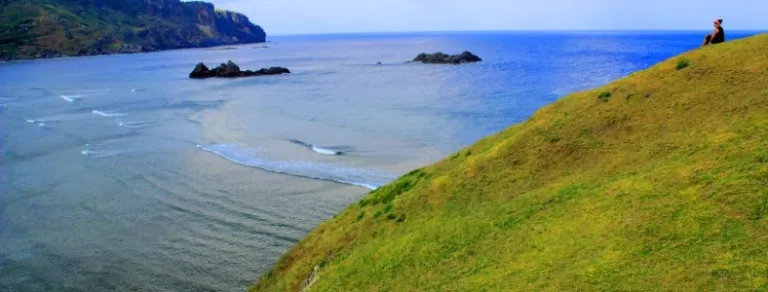
“Peace.” says Ina. The formation of hills called Alapad, greenery on one side, exposed limestone on the other, is steep but it’s not a difficult climb. The group – a mixed bunch, all searching for a spot to call their own – hops from stone to stone, avoiding goat droppings and other unrecognisables.
But 53-year old Ina is tired. She insists she’ll stay on the base of the hill until tour guide, Arthemus, drops this clinching trivia: that this Imnajbu vista is where Richard Gomez carried a dying Dawn Zulueta in his arms in the Filipino cult classic, Hihintayin Kita sa Langit.
“Sige na.” she calls out as Art goes back for her. “I-Dawn Zulueta mo na rin ako.”
Nanay, as we’ve come to fondly call her, goes first. She takes a series of photos with Arthemus as her prop. She is nestled in his arms, her head resting on his shoulders.
Arthemus’ muscles bulge. He takes a deep breath as he attempts to fight gravity. The weight of his load battles with wind resistance.
The sea behind them is a mirror, reflecting the heat of a Batanes afternoon, the treeless rock formation a direct hit to warm air on all sides.
And as I sit on Alapad’s edge, I wonder, as I look at this postcard moment, if a windswept Dawn Zulueta ever sweated this much.
Also read: 8 Reasons Why I Fell in Love With Batanes
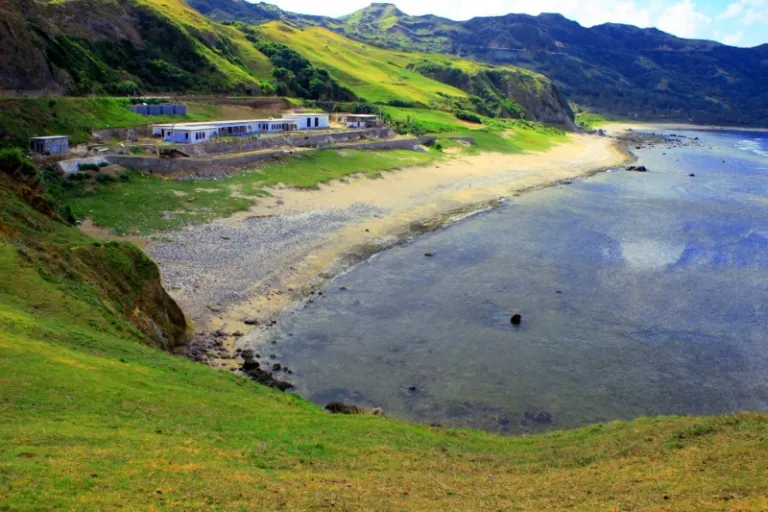
Nanay Ina
I had a pre-written Batanes in my mind. There, in that imagined lacuna, I would find peace brought about by isolation and radical individualism.
This statement is flawed on many levels, of course. Mostly because I don’t really know what peace is. Except that the closest thing that I’ve come to it, a state of non-sensation almost, happens in escape.
What traveller has never imagined treading on land that has yet to be mapped, or blogged? What traveller has never selfishly imagined the exhilaration of earlier explorers unlocking a piece of himself the rest cannot check into, or track through Google Earth?
Solitude suspends the need to compromise. To deal with outside stimuli. To dilute the self. In my imagined Batanes, I have become the island; and, consequently, in Jonathan Franzen’s words “it seemed, the island was becoming the world.”
This was the Batanes I was holding on to as my mind reels back to a possible misencounter brought about by a box of donuts.
I liked the look of Batan from the air. All greens. Very few houses. A month or so prior to the trip, I anticipated the sensation of arrival.
Liveng, thatch-like wind breakers outlining the boundaries of private property, cross through fields and fields of land. They were the only delineation in the unending grass that stretched for kilometres in all directions.
Picture out my chagrin then as a Yuppie cuts in front of me, carrying a bright mustard box of donuts. We both struggle to cram out of the 36-seater into a minuscule Basco airport.
Batanes, to me, has always been a touchstone to the unchanged, a frontier whose distance seals the noise of consumerism.
But there he was, unaware of the perception he just ruined, carrying a dozen artificially-flavored worlds. My immediate reaction was to snatch the box before it contaminates the rest of the place.
This would have still been futile. There seems to be no escape from it.
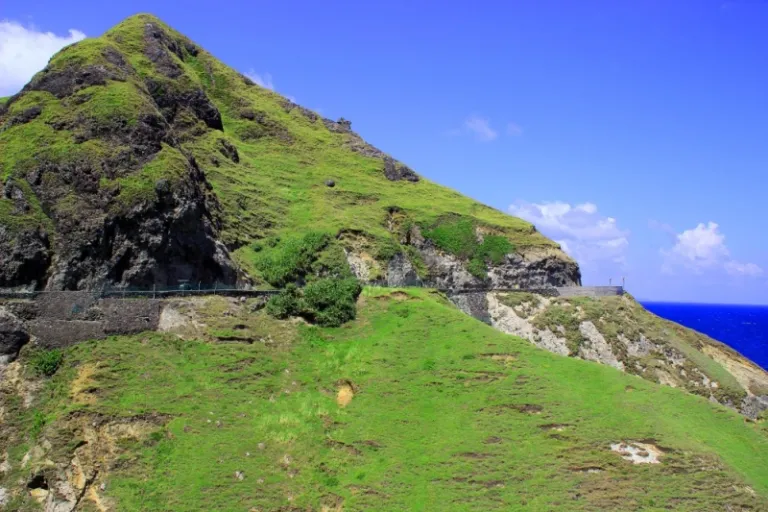
“May banko na pala. Ang rami nang bahay! Akala ko pupunta ako sa isla pero ang rami na palang tao. ” says a lady on the passenger seat of our van.
Nanay and I took the same flight from Manila and are now tourmates. Taking a seat beside the laconic driver, she had, in retrospect, cunningly excused herself from polite small talk throughout the trip, hidden behind dark glasses and a straw hat.
Both of us were hoping perhaps to experience Batanes solo. Do-it-yourselfers that didn’t like conceding to the other. But both us though never considered the price to pay for the place’s inaccessibility either.
A litre of gas in Batanes is a whopping ₱59. To give a staunch comparison, gas in the expensive metropolis that is Manila is ₱42. A typical rice meal in Batanes is ₱180. It is ₱120 in Manila. A tricycle ride to the next town from Basco is ₱300. It is ₱50 in Manila. By economic necessity, Nanay and I were stuck together. For frugality’s sake, there was no other way to see Batanes than to conquer our discomfort of the symbolic “other”.
Basco is a tightly-knit community with a masonry of stones and streets. Yet it wasn’t the isolated village I pictured it out to be. When we arrive at Marfel’s Lodge, an internet representative is sitting in the living room, infecting the air with the nasal voice of Kris Aquino.
As defense, I retreat back to the van, ready to take Nanay and I away to South Batan.
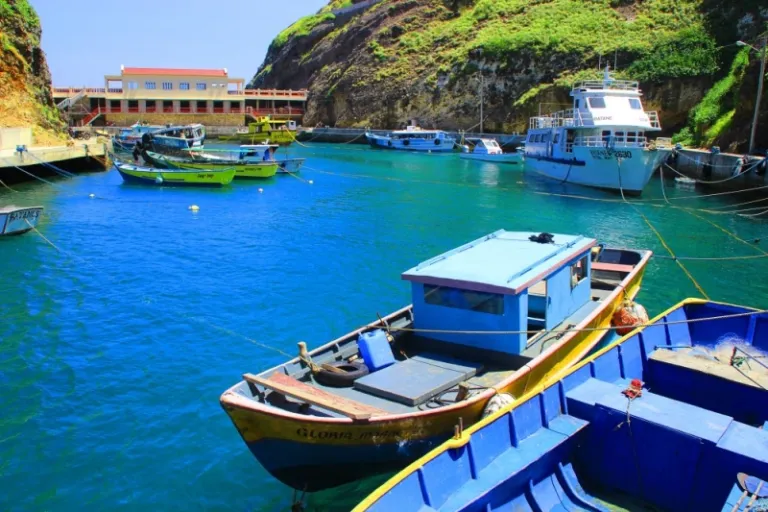
The Uninhabited Ones
Batanes is made up of 10 islands. Only three of these islands are inhabited – Batan, Sabtang and Itbayat – while the rest – Mavulis, Ivuhoy, Dequey among others – fall into obscurity, too difficult to get to by plane or boat.
To get to the more uninhabited ones, you would have to set aside several weeks for a willing boatman and good weather conducive for landing on rocky shores. And again several weeks to actually escape the same islands which are devoid of infrastructure and trivial conveniences. While the Ivatans are skilled seafaring people, even they are mindful of the wrath of the West Philippine Sea.
But already, as soon as I get to what may very well be one of the least inhabited islands in the Philippines, I become restless again and look for something farther away.
As we pass by farm to market roads on our way to Tayid Lighthouse, I question Arthemus endlessly about the possibility of going to the northernmost island, Mavulis.
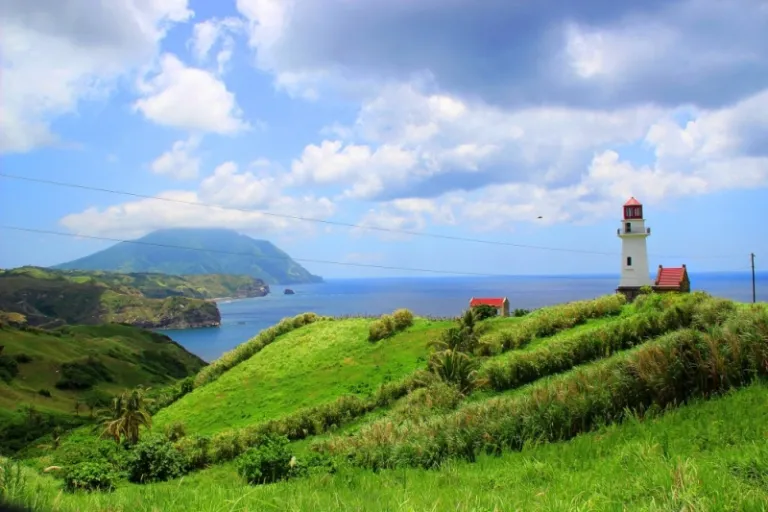
The lighthouse temporarily satiates this clamour though. Tayid is a looker. A mesmeric combination of stone walls, red roofs and wooden, bolted doors. Cows graze in its pasture. Mount Iraya looms in the background. And down below is a secluded beachfront meeting an ironed-out sea. A companion describes it as “parang screensaver ng Windows XP.”
Several times over the course of the tour, Arthemus has to warn me about standing dangerously close to edges as in here in Tayid. “Papayagan kita, peru yung iba, hindi.” exempting me from supposedly cut-and-dried rules as I sit on jagged rocks, a foot dangling in the air. He seemed to understand that part of my happiness came from what lay beyond.
Nanay takes out her digital camera, proceeding to take photos of everything.
Nanay Ina or Filipina Mendoza is a travel blogger from Batangas but in her Facebook account, she dubs herself a Flyer at the Hogwarts School of Witchcraft and Wizardry.
At 53, she has been to almost all of the provinces in the Philippines, lacking only 12 from Mindanao.
She asks me to take a photo of her in front of the rolling hills. For posterity as today’s her birthday, after all.
Taken aback, I ask her the same question most people I’ve encountered on my trips ask me. “Bakit ka nag-sosolo, Nay? Birthday mo pa naman.”
Also read: On Solo Travel and Feminism
As soon as it came out, I knew I had become one of the very people I’d secretly been amused with, people who didn’t seem to understand solitude.
She smiles and says “Mas madali kasi mag-plano pag solo.”, then proceeds to take more selfies, three quarters of which is her profile and a small quarter of it the outland.
I look at her from afar and realise I may very well be looking at myself 25 years from now.
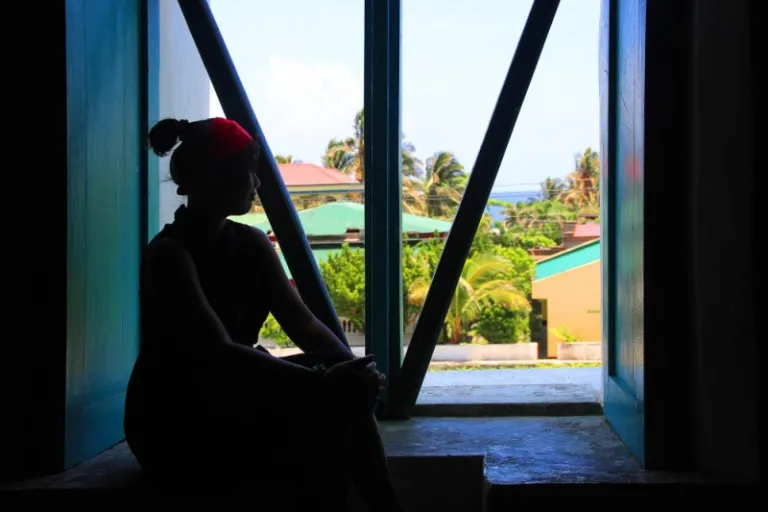
This is the depth of my relationship with Nanay, and this is what solitude seems to bring to two people looking for it – a distant view of a separate island, always blurred and unfamiliar. I do not know if what I made of her is fiction or a heavy-handed representation of myself in her. Whatever it was, I related to her clamour for human depravity.
I always seem to spot her, separating herself as she takes a photo of the mini-replica of the San Carlos Borromeo Church or looking around the port of Ivana.
There never seems to be enough space to escape to but Mahatao fitted us both. Unlike compact Basco, Mahatao is commodious, a ghost town to any tourist who doesn’t peer closer.
When you do, you’ll find that a larger cosmos thrives separately from it. The town is around 30 kilometres away from Basco but it might as well have been a different sphere.
Here, three boys are shooting hoops in the basketball court while just beside it, at the police station, two policemen are writing reports in the front desk, the brunt of their work considering Batanes has zero-crime rate.
Traffic, Arthemus says, is defined as when three vehicles meet on the road. Otherwise, there is no use for the word at all.
As we walk towards the San Carlos Borromeo Church, adjacent to the Book of Blank Archives, the Vice – Governor whizzes by in his motorcycle in his khaki shorts and shirt, without the airs of escorts.
“Kaplan ka pa nu Dios si Chamakuyab aya.”, greets Arthemus, a lengthy afternoon greeting that barely reaches the ears of the Vice-Governor, already a length away.
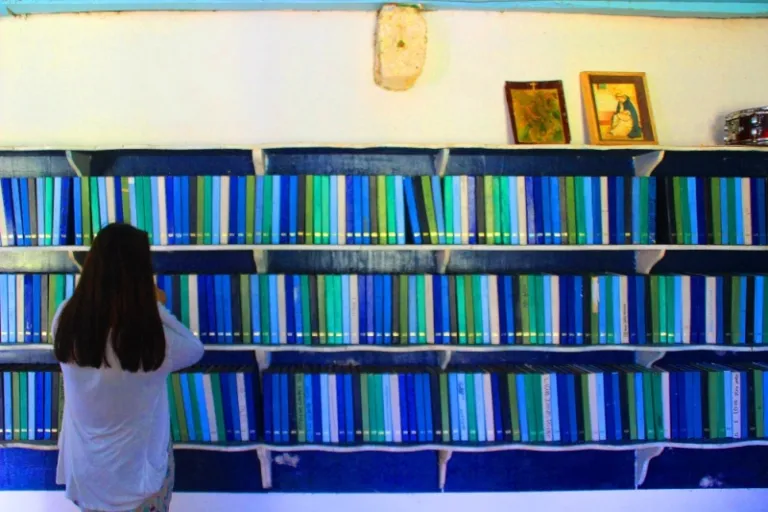
The Mayaang a Libro du Vatan or the Blank Book Archives is a collection of bound blank pages beside the National Culture Treasure, the San Carlos Borromeo Church. While some gravitate towards the magnanimity of the altar, I veer towards the quieter companionship of books.
The Blank Archives is where visitors can write in free form their thoughts about Batanes.
There are around 400 sets in the collection, all hardbound in blue. Messages range from gratitude for the place’s easy acceptance of outsiders to professions of love to a muse who might not even get the chance to read it.
I choose book number 199. There is something about its incompleteness that speaks to me. For the first time, scanning through the words of those who came before me, I feel a certain closeness.
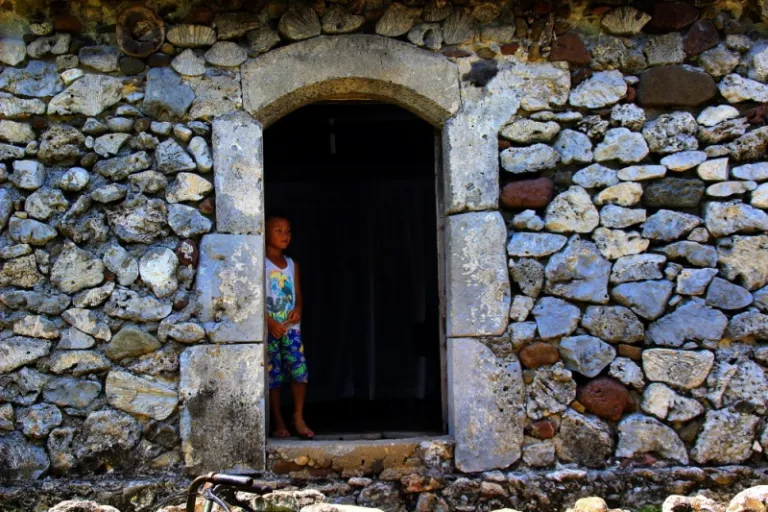
The Insatiable Lacuna
It is 7:00 in the evening, but the sky is still half-way between twilight and shadow. The moon peaks out with a promise of fullness.
We invite Nanay to the park for dinner but the beauty of Batanes has seeped out her energy, and she retires to a small side street with access to the sea.
When I ask her though what the best part of her day was, she says to me with conviction “New friends.”
Here lies the difference perhaps between Nanay and I. People like her are fortunate in the sense that they are able to make peace with their solitude, realising it is a choice rather than circumstance. She can get out of it if she wants to for I later on, through Facebook, that while this need to be a company of one exists, she also lives in a far more concrete island where she recognizes she is needed by a husband, children and grandchildren; that a structured corporate job with mandatory interaction takes up her everydays.
In a sort of Stockholm Syndromesque relationship, I have trapped myself inside mine.
The constant search for isolation is really just the search for a world that will allow your experiences to be fully your own. To customise. To personalise. To constantly fulfil whims at your time and how your want to do it. And when inconvenience is set on its path, like expecting a place to be what it never really was, the entitled solitude seeker becomes bereft and dissatisfied.
This is what Franzen, once again, calls the symptoms of a world that is now too small and is built on hyperspeed.
The problem with is that the need to find a personal lacuna is often insatiable, and unstoppable. Mine certainly is. Nanay has perhaps learned to control hers.
No matter how solitude protects us of hurt and want, it is also self-defeating by the very notion that we will always want more of it.
Every time I dare think of wanting the realities to change for me, instead of the other way around, I now think of Nanay.
Her legs are pumped in the air in surrender. Her arms are fully stretched in openness. And her iconic words, echo through my hollowed mind, addressing the cosmos that now deviates from human interaction in order to go deeper to that sense of self.
“Sige na. I-Dawn Zulueta mo ako.”
Also read: Batanes – The Home of the Winds (Part 1)
Published at
About Author
Subscribe our Newsletter
Get our weekly tips and travel news!
Recommended Articles
10 Bantayan Island Resorts, Hotels, and Rentals for Your Tropical Escape 10 Best Mountain Cafes in the Philippines for Your Peak Coffee Experience Coffee date on the mountains, anyone?
10 Family Outing Ideas in Metro Manila Under ₱500 Looking for a weekend bonding with the family under ₱500? Head to these places, pronto!
10 Fun Things to Do in Manila Alone Live your best life in Manila, even when you’re riding solo.
10 Instagrammable Laguna Restaurants and Cafes You’ll Love Elevate your Insta-game at these Laguna spots.
Latest Articles
Luisa Yu: 80-Year-Old Filipina Travelled 193 Countries in the World Travel has no limits, and neither does Luisa Yu at 80!
Cebu Pacific’s First Clark to Coron Flight Takes Off! Direct flights to Coron now boarding!
7 Best Pet-Friendly Beach Resorts in Batangas and Zambales Why leave your pet behind when these pet-friendly beach resorts in Batangas and Zambales offer the perfect getaway?
Calbayog Zipline: One of the Longest Overwater Rides in the Philippines Glide over the ocean on one of the longest overwater ziplines in the Philippines
Complete Thrilling Travel Guide to Cambugahay Falls in Siquijor Swing, swim, and soak in the beauty of Cambugahay Falls Siquijor!

